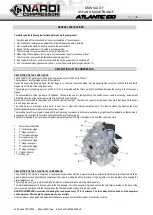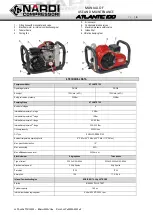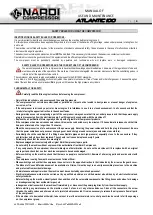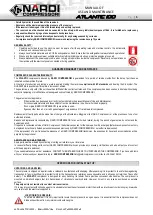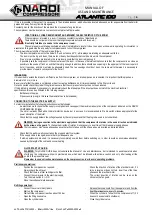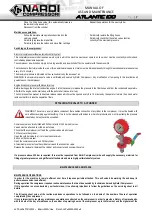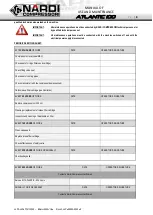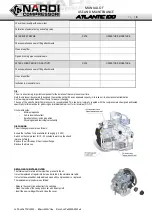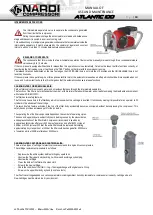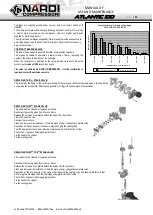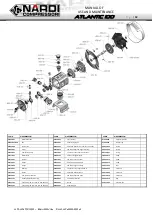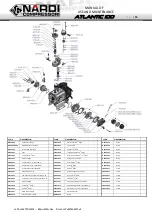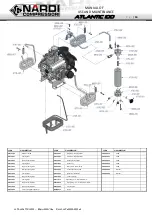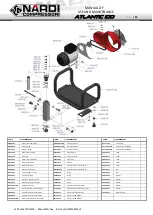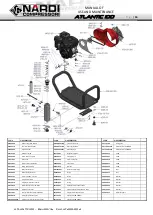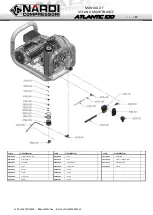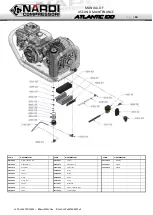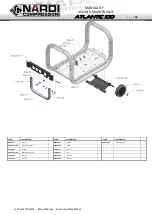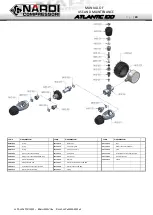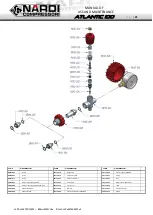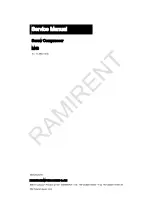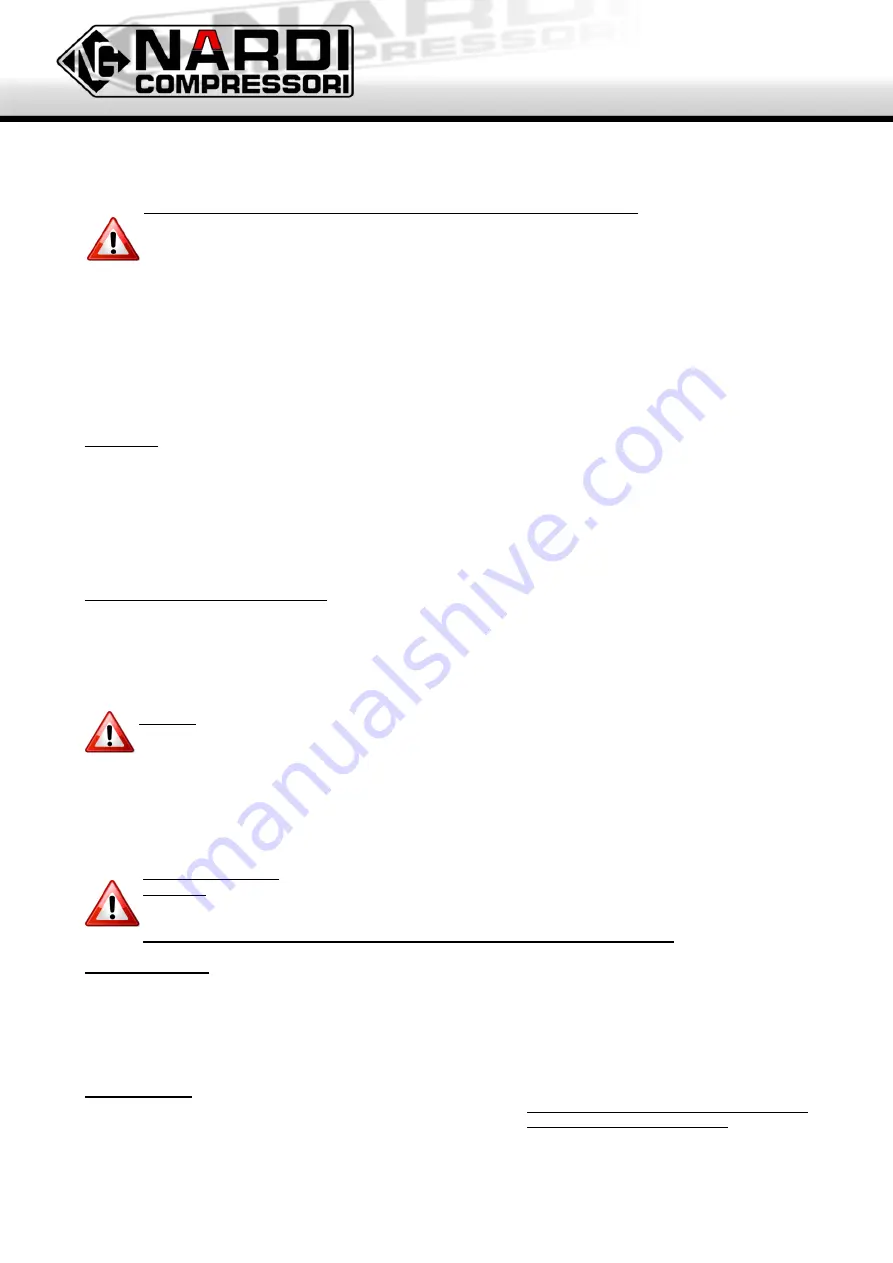
MANUAL OF
USE AND MAINTENANCE
ATLANTIC 100
P g .
|
6
ATLANTIC 100 - Rev.00/16 Cod. AT200-002
If this is impossible in the context it is necessary to fit an intake extension, which should be located above and as far as possible from the harmful
gasses and away from any flammable agents.
Constantly monitor the direction of the wind and the movement of engine fumes.
The compressor must be located is a cool environment protected from weather.
LOCATION IN A CLOSED ENVIRONMENT AND MINIMUM CHARACTERISTICS OF THE ROOM:
If the compressor is located in a room it requires a constant circulation of breathable air.
There should be no liquids in the room that might evaporate (solvents, additives, etc.).
It is strictly forbidden to smoke in the compressor room.
The compressor must intake unpolluted air and it is preferable to locate it close to an open window while operating. Air circulation is
essential both to guarantee the air quality for compression and to cool the compressor.
The minimum characteristics of the room are as follows:
-
The room temperature must not be below 5 °C and not above 45 °C, while always maintaining an adequate ventilation.
-
The room must be dry and clean, there must not be any dust deposits that could be drawn into the compressor.
-
If two or more machines are located in the same room ensure that the room is big enough.
-
If possible locate the compressor in the coolest area of the room. In the case of natural ventilation ensure that the compressor is as close as
possible to the source of fresh air and that this is big enough. In addition, there should be an opening in the upper part of the room to permit
hot air to escape, and this must also be adequately sized. The two openings should not be on the same wall, otherwise it is necessary to
provide means of upward conveyance for the hot air.
INTAKE PIPE:
If it is decided to extend the intake to a different area from the compressor, an intake pipe can be connected. It is important that this pipe has a
diameter of 40 mm or more.
Be very careful that the intake is not blocked or bent to create a bottleneck, and it is recommended to fit a filter on its end.
Once connected check the cylinder filling times to ensure that the compressor air output has not been reduced.
If this problem is observed it is necessary to immediately check the intake pipe. If the air output does not match the machine's technical
specifications, this can be attributed to the following causes:
-
Bottleneck in the pipe.
-
Pipe excessively long (in this case the diameter has to be increased).
CONNECTION TO THE ELECTRICAL SUPPLY:
For electrical installation the following instructions must be followed:
-
An electrician must check that the supply is compliant and can support the maximum absorption of the compressor indicated on the NARDI
COMPRESSORI EC label.
-
The motor is already fitted with a thermal protection device, but in any case it is recommended to fit a trip switch or fuses appropriate for the
power absorption of the motor.
-
Check that the supply delivers the voltage required by the compressor and that the plug to be used is not undersized.
WARNING
:
during connection to the electrical supply check that the compressor fan rotates in the same direction as indicated
by the arrow on the guard
. To change the direction of rotation it is necessary to invert two of the three power supply phases.
Your compressor may have a phase sequence that will not start up until the phase wires are inverted as indicated above.
-
Check that the earth is well connected on the plug and electrical system.
-
If the supply cable is changed, ensure that it is of adequate size.
-
If wind-up extensions are used, it is necessary to completely unwind them before switching on, in order to avoid an anomalous absorption
caused by the length of the cable and so overheating.
QUICK START UP GUIDE:
WARNING:
This QUICK GUIDE does not substitute the Manual of Use and Maintenance, but is intended to assist operators when
starting up the compressor with quick practical advice, which must be followed with extreme caution, and only after reading all the
points in the present manual.
Remember to conduct routine maintenance on the compressor in order to avoid operating problems.
Preliminary operations:
-
Position the compressor as required.
-
Always check the oil level.
-
Check that there is a filter cartridge in the filter.
-
Connect the compressor to the electrical supply.
-
Turn the main switch to I – ON.
-
Close the condensate release valves.
-
Check the direction of rotation of the electrical motor, if it
turns in reverse or does not turn, invert two of the three
phases on the electrical motor.
-
The correct direction of rotation can be seen on the
sticker on the fan guard.
Refilling operations:
-
Connect the valve to the cylinders.
-
Start up the compressor.
-
Wait until the compressor reaches about 150 bar.
-
Open the filling hose valve.
-
Open the cylinder valve.
-
Release the condensate from the separator and from the
final filter at least once every 10 minutes.
-
When the cylinder is full switch the compressor off (if it
does not have automatic shutdown).
-
Close the cylinder valve.


